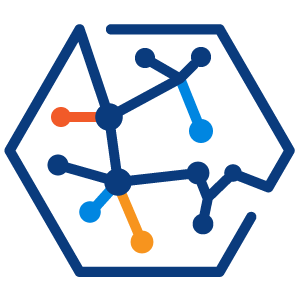
 RDAP Service
RDAP Service
The Registration Data Access Protocol (RDAP) is a standard protocol defined by the Internet Engineering Task Force (IETF) to replace the WHOIS Protocol. The RDAP is a data obtaining service for Internet resources such as Domains, Contacts, Hosts and Registrars via HTTPS for higher levels of security. In addition, RDAP is designed to afford more convenience when replying to queries with its JSON format that enables machine-to-machine operation. More information can be found at https://www.icann.org/rdap.
.scb RDAP is open to everyone. However, some information, like personal data, is redacted to comply with the personal data privacy laws and policies. However, a user who can prove the right to access specific redacted data can submit a request via a RDDS request form. To submit any query to .scb RDAP Service, users have to read and accept our .scb RDAP Access Policy.
.th RDAP is open to everyone. However, some information, like personal data, will be redacted to comply with the personal data privacy laws and policies. However, a user who can prove the right to access specific redacted data can submit a request via RDDS request form. To submit any query to .th RDAP Service, users have to read and accept our.th RDAP Access Policy.
-
What is RDAP?RDAP stands for Registration Data Access Protocol. It was developed by the Internet Engineering Task Force (IETF) as a replacement for the WHOIS services. It should be noted that RFCs 7480, 7481, 7482, 7483 and 7484 define RDAP behavior.
-
How does RDAP differ from WHOIS?RDAP is a HTTP-based protocol that delivers data in a standard, machine-readable JSON format. WHOIS is a text based protocol and, as it doesn't have standardized queries and responses, the interaction with Registries can vary significantly. While Registry lookup and search services have traditionally been offered through WHOIS, it has a number of shortcomings, including the lack of a standard data model, the lack of support for internationalization and the inability to authenticate users to provide differentiated services to different classes of users.
-
Do I need an RDAP client?There are a number of RDAP clients currently available for use. Whether or not you require an RDAP clients depends on your needs and intended use of the RDAP service.
-
What is bootstrapping?The IANA Bootstrap Service Registry publishes bootstrap files that provide the authoritative servers to query (this is called bootstrapping) for RDAP. The IANA Bootstrap Service Registry for Domain Name Space.
-
What are bootstrap files?Bootstrap files are JSON files, as defined in RFC 7484. IANA publishes these files in their Bootstrap Service Registry for the Domain Name Space, as well as the IPv4 Address Space, IPv6 Address Space and Autonomous System Number Space.
-
How do I make a query?The querying format for RDAP is {Service Host}/{Query} where {Service Host} is the hostname of the Registry's RDAP service and {Query} is the query that you want to submit. For example, a domain query for nic.scb against the .scb RDAP service would be: https://rdap.nic.scb/domain/nic.scb and thains.co.th against the .th RDAP service would be: https://rdap.thains.co.th/domain/thains.co.th.
-
What is the ICANN Operational Profile?The 'Operational Profile' is defined by ICANN so that all RDAP services operate on a consistent basis. ThaiNS's RDAP Service implements the ICANN Operational Profile. More information.